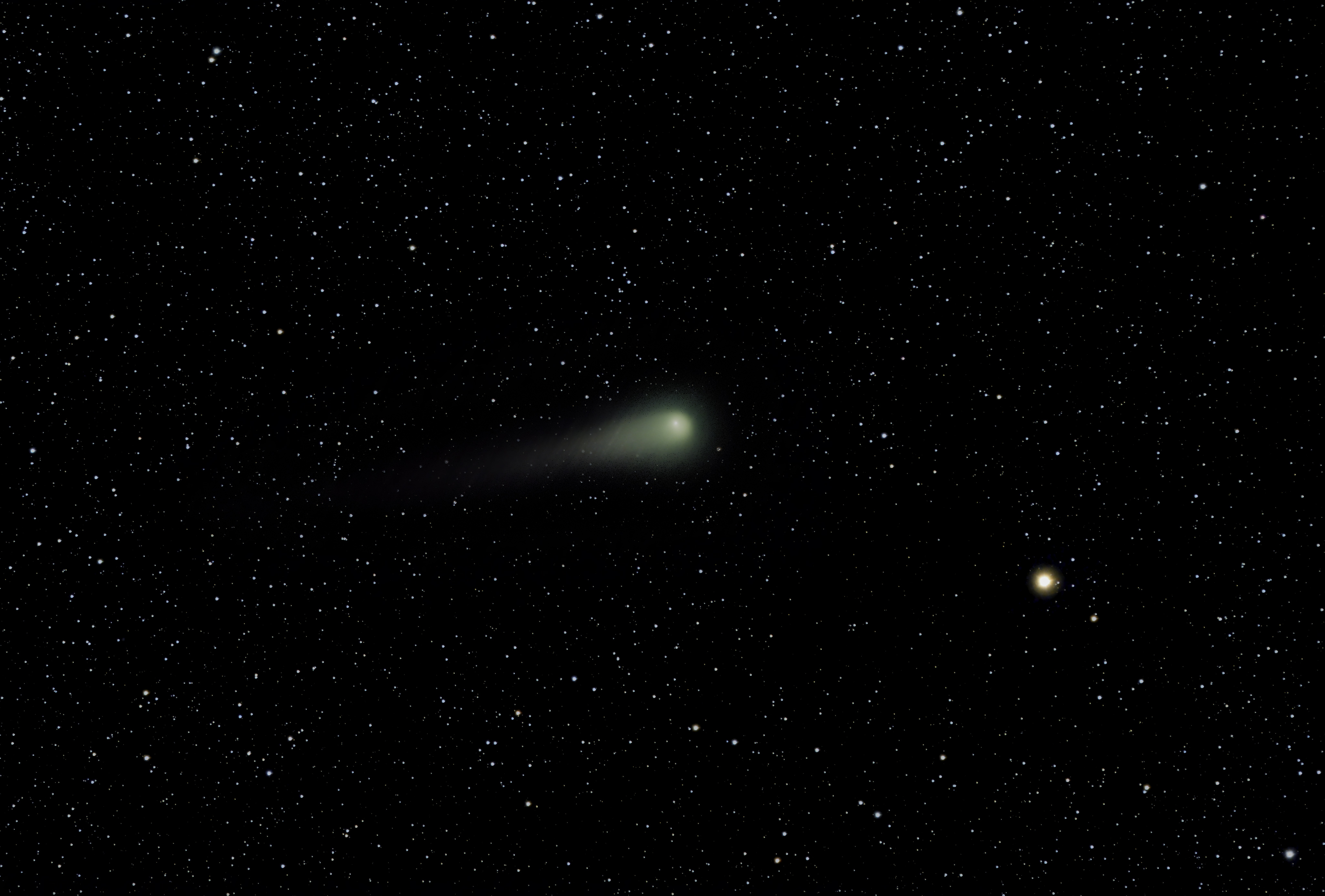Observation by Martina McGovern: Comet C/2017 K2 (Panstarrs) has returned...
Uploaded by
Observer
Martina McGovern
Observed
2022 Jul 05 - 23:00
Uploaded
2022 Jul 10 - 21:16
Objects
Planetarium overlay
Constellation
Ophiuchus
Field centre
RA: 17h15m
Dec: +00°04'
Position angle: -93°57'
Field size
1°52' × 1°16'
Equipment
- Sharpstar 100 QII, SkyWatcher HEQ5 PRO, ZWO ASIAir Pro, ZWO ASI294MC Pro, EAF & 60mm guide scope + ASI120MM mini & Optlong L-Pro Broadband filter. Plus, ZWO ASIAir Pro running the show
Exposure
Integration time was 1hr 46mins. Subs were 120sec (38 off) &180secs (10 off) + Darks, Flats & Dark flats. Guided image.
Location
Near Cambridge city UK, Bortle approx 4
Target name
Comet C/2017 K2 (Panstarrs)
Title
Comet C/2017 K2 (Panstarrs) has returned
Copyright of all images and other observations submitted to the BAA remains with the owner of the work.
Reproduction of work by third parties is expressly forbidden without the consent of the copyright
holder. By submitting images to this online gallery, you grant the BAA permission to reproduce them in
any
of our publications.


